
Click here for Part One of our set visit, which gives you an introduction to the world of this epic samurai fantasy film.

Carl Rinsch, Director
You may not be familiar with the name “Carl Rinsch,” but chances are you’ve seen one of the many effects-driven commercials he’s directed. He’s also a protégé (and son-in-law) of Sir Ridley Scott. 47 RONIN may be his first feature film, but that’s not too shabby a pedigree.
When we sat down to speak with Rinsch on set in June of 2011, he was surprisingly forthcoming about the project and its challenges. It was obvious that with a risky property like this, he’s had to sell it repeatedly—to the studios, to the actors and now to audiences.
On what interested him in the project:
When I was looking at a bunch of different scripts, I saw this one. I saw the end [spoiler removed.] and I thought, “My God, what studio has the guts to make this movie?”
The more I looked in to the history of the event and what is considered Chūshingura… which is the tradition of the storytelling of the 47 Ronin. It’s not a historically accurate story. It’s taking it and making it your own. There’s been a “Hello Kitty” Chushingura. They’ve told the 47 Ronin with all women. It’s like Romeo and Juliet. There’s the gay Romeo and Juliet and the gangster Romeo and Juliet. It’s the same thing. It’s the tradition of making it your own.
On his overall vision for the film:
At first, when I looked at it I said, “Oh this is hallowed ground. I don’t want to trespass on this. I don’t want to f*ck up a national iconic story.” But then I started realizing, well, that was the fun of it—to make it your own. And what [screenwriter] Chris Morgan had done from the beginning was to say, “What if you made some of the samurai story a fantasy?” And so we leaned in to that.
“Okay, what are some of the fantasy characters?” I, as a westerner, had I never heard of—I knew Kirin beer, but I can’t imagine the real Kirin. Or the Tengu warrior. I never knew what a Tengu warrior was. The more I looked in to it, the myth and the fantasy of Japan had more characters in it than Marvel could ever have in their entire menagerie. This is an opportunity to do something totally, totally different.
So our version of the story is going to be a samurai fantasy epic. That’s cool. I haven’t f*cking seen that before. “Kurosawa on meth.” Never seen that. I’ll do that.

On the epic scale and special effects:
Instead of doing it as [Zack Snyder’s] 300 did it, and make it very much “shot on a stage with a big green screen,” we’re going to opt for everything. We’re not going to just say that this has visual effects in it and we’re not going to make what could be a boring period piece. We’re going to do everything. We’re going to have big sets. We’re going to have big costumes. We’re going to have big, real action sequences. We’re going to have CG augmentation, CG environments, CG characters and CG fights as well. And you’ll never be able to know where the seam is.
With that shot this morning (read more on it here)… Traditionally I would look at that and say, “Oh, that’s a CG shot.” It looks unreal. One of the things that happens with 3D is it almost feels like a composite. Nobody’s going to believe that we really shot that. Nobody’s going to believe that we built that set. But there is something to be said—for as much as I love CGI and I do—you can make it photoreal and nobody would ever know, but there’s something to having a real set. It helps the actors.
On the challenge of shooting practical:
We shot a lot of stuff in Budapest. The biggest soundstages—bigger than all of Shepperton combined. We were happy to find that much space because the sets are huge. But you do want to go outside. Some people like things like THE IMMORTALS where it’s shot on a stage and its all polystyrene. I wanted to give it a real space. For those castles; they’re just too big.
It’s been a real challenge. We’re shooting all the night stuff. The third act all takes place at night. And the nights are only four hours long. Shooting in stereo. The cast doesn’t speak English. [“And it’s your first picture!”] And that too.
On the transition from commercials to feature films:
I wish I could say it’s a marathon, but no. It’s like getting beaten by a sledgehammer every single day for a long period of time. So it has all the intensity of a commercial. It just takes six months.
It’s a good thing though. Scorsese was three weeks behind after his first week. James Cameron was three weeks behind after his second week, so we’re doing really, really well.

On shooting in native 3D:
I hadn’t seen anything like this before. I saw a test of Scorsese’s HUGO and I thought that’s a whole other world. I see real people and real sets and traditional lighting—beautiful lighting—but done in stereo. I thought, this is not a cheap trick anymore. It’s not a gimmick. It’s not a horror movie. It’s not a piece of shit. It’s a high quality film. That blew me away.
We don’t want it to be in your face, like swords up against your grill all the time. But at the same time, I saw TRON. I liked the movie, but it felt too subtle for me. Your eye kind of compensates. You get 15 minutes in and wonder “Is it still 3D?”
I think you have to play with it like music. Like in TRANSFORMERS. I can’t watch a bunch of action. I fell asleep in the second TRANSFORMERS, just because it was the same note for two hours. It doesn’t have music to it. So what we’re trying to do in this 3D is have music to it. It’s going to get a little bigger here then it’s going to mellow out then it’s going to ramp up again. That will help you.
On shooting digital vs. film:
We’re shooting digital and I like film. We did a lot of tests early on with Keanu Reeves just to make sure that it’s a more romantic kind of feeling. Whether it’s in the lighting, which is very old fashioned, our approach is very classical. The cameras are so big—they’re the size of a Volkswagen—you have to revert to the way they used cameras with Hitchcock or David Lean. It becomes that style and approach. I can’t do handheld. The camera’s just too damn big.
On the big risks involved:
You have to imagine what a gutsy, crazy thing this movie is. Peter Jackson had us all at “Hello.” He’s making THE HOBBIT. Done. THE DARK KNIGHT RISES. Done. We’re creating a world, not from scratch, but a world that’s entirely new to most western audiences and we’re doing it in stereo and we’re doing it with a cast that doesn’t speak English as their first language. That on paper…that’s officially crazy. It’s a really gutsy move on the part of Universal.

Simon Atherton, Weapons Master
Halfway through our chat I asked Atherton how he got his start as a Weapons Master and he said his first movie was RAIDERS OF THE LOST ARK. I don’t think the man needs any further introduction.
On working on his first samurai film:
One movie you’re doing medieval, and the next you’re working on a samurai film and you have to learn all about samurai weapons. I can’t say I was an expert when I started but probably I’m an expert now.
I got a call to come and do the film before Christmas. “Great, I’ve never done a samurai film. That’ll be fun.” But there’s an art and ritual to it. The samurai himself is the sword. It’s all about the culture of the sword. Every inch of this sword has a name in Japanese. Please don’t ask me what they are. As you go down, it’s divided in to different names. When you draw a samurai sword, there’s an art to that as well.
On the cultural implications:
It’s a film that only we could’ve made. I don’t think the Japanese could’ve made a film like this, because they’re so properly stuck in to the tradition and the correct way of telling it. We’ve messed it a bit. We’ve played around with it to make it more of an interesting film to a bigger audience.
I think Carl has made it a bit more useful sort of movie. A more acceptable—or accessible film for a bigger audience.
How did you become a weapons master?
I trained as a gunsmith, got an apprenticeship at the age of 16. Then I moved over to the film industry. My first film was RAIDERS OF THE LOST ARK. I started with guns and then thought, “Well, if I can make a gun, I can make a sword.” And then they gave me BRAVEHEART to do. And then I wished I’d never mentioned the word sword.
What’s the most exotic weapon you’ve ever made?
It was on GLADIATOR when Ridley Scott asked for an Uzi submachine gun for a gladiator. And we had to make a crossbow that fired four bombs. And it was all around a pillar and you pressed the head of Ceaser to fire it. That was fun. I couldn’t draw it. I just had to make it. Give me four days and I’ll make it work.

Atherton also took out some of his creations and gave us a crash course in samurai weaponry:
- Samurai can carry three weapons (all of which are seen in the film): A traditional katana, a midsize wakizashi for indoor or smaller spaces, and a dagger called a tanto. The way to test a samurai sword is to see how many human bodies you can cut through. That determines the value. Some original blades can go up to $15,000.
- 47 RONIN features mostly traditional weaponry like the sword, bow and arrow and even guns (though they’re considered dishonorable). There’s also a “sleevecatcher”—a spiky pole used to tangle up an opponent’s kimono without getting within sword’s reach.
- Atherton’s team created 600-700 swords for the film, making different weapons for each character (including a giant sword for the 7’7″ Lovecraftian warrior). There were multiple version of each weapon—rubber for doing stunts, aluminum blades to fight with, and bamboo blades for safety.
- All the extras had to attend a five-day boot camp on how to use a samurai sword, plus specific training every night for the next day’s scene.

Penny Rose, Costume Designer
Rose has worked as a costume designer on everything from PINK FLOYD’S THE WALL to the PIRATES OF THE CARIBBEAN films. For 47 Ronin, she and her team had to design and fabricate 988 costumes, 400 suits of armor and 13 different styles of helmets. And due to the production schedule, they had to do it in eight weeks instead of the typical eighteen.
On her approach and research for the film:
The starting point is authentic Japanese. We researched quite a long time and saw all the previous Japanese 47 Ronin movies and then decided to give it a bit of a kick. We went for a bit of fashion, a bit of fantasy and ended up where we are today. We all had to take master classes. We all had Japanese costumers with us. We know how to tie an obi eleven million different ways. Everything is authentic. There are no zips, there are no buttons and no pockets. Everything is proper Japanese wear.
And I’ve taken a bit from everywhere, quite a bit from couture… Alexander McQueen quite a long time ago did a Japanese line and Christian Dior did a great Japanese. So we put together a bit of this one and a bit of that.
On the thematic use of color:
That was a Carl decision, that we’d give them all a kind of identity, so when they’re fighting you know who is who. It just seemed obvious to make the Shogun gold since he’s a godlike figure. The Ako red—everything is abundant, floral and pretty. And purple-black for the villains.

On designing with CGI and 3D effects in mind:
What tends to happen in these big films is that you just let the computer generator create the costume and, as sure as eggs are eggs, at one point somebody says, “Oh, we’d like a real version”. Well for me to then create what they’ve digitally done is really hard. So I start it and they take it away. They make it bigger and better than mine, but at least it’s a starting point.
You just have to have more attention to detail with 3D, because you’re going to see it much closer. It’s the same method of working, just more attention to detail
On taking suggestions from the Japanese cast:
As a rule of thumb, irrespective of the films subject, there are three people that enter the dressing room: Me, the actor and the character. The intent is that after an hour or whatever it takes, the actor walks out looking like the character. Obviously in this instance you have slight restrictions because you have an iconic silhouette. We didn’t want to give any of them a non-Japanese look. Except Lord Kira, who Carl said is a dandy. He’s almost like a rap star. Give him some bling.
But they’ve all had something to say. In truth, they’ve been incredibly good natured about the fact that we’ve gone non traditional. So while the shapes are traditional, the fabrics are not.


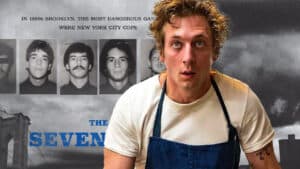

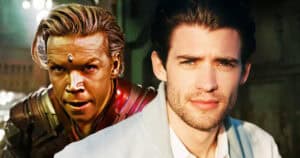
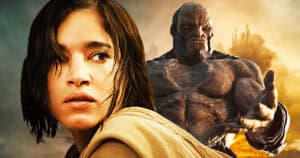
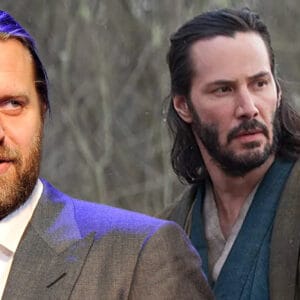
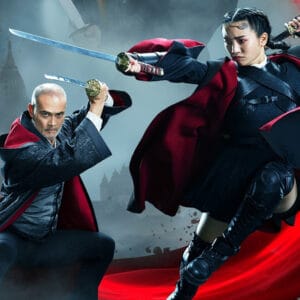
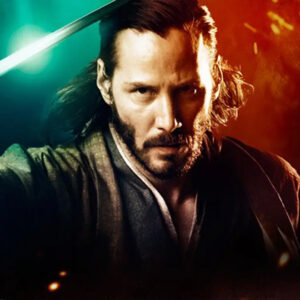
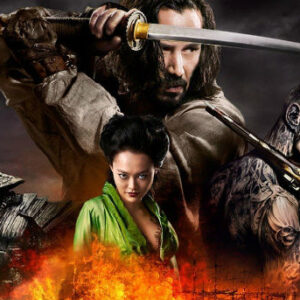
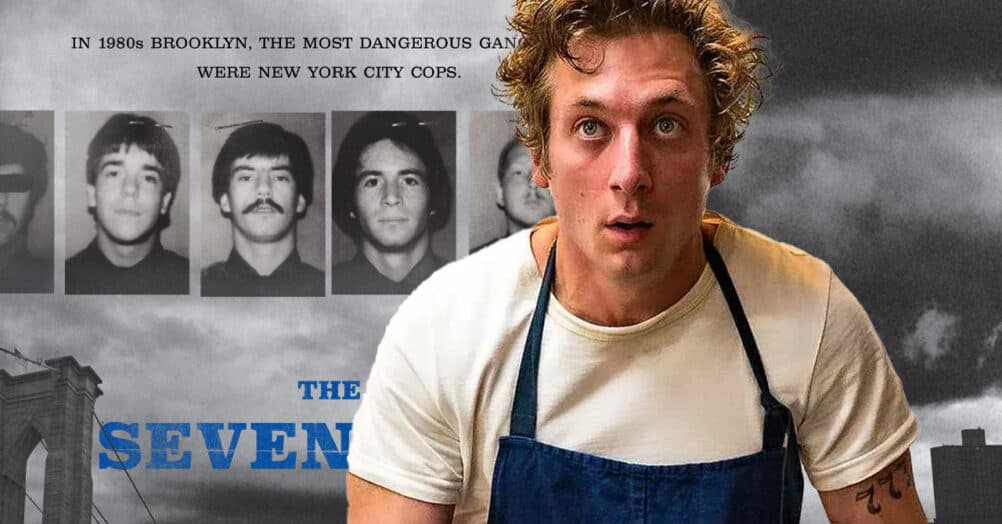
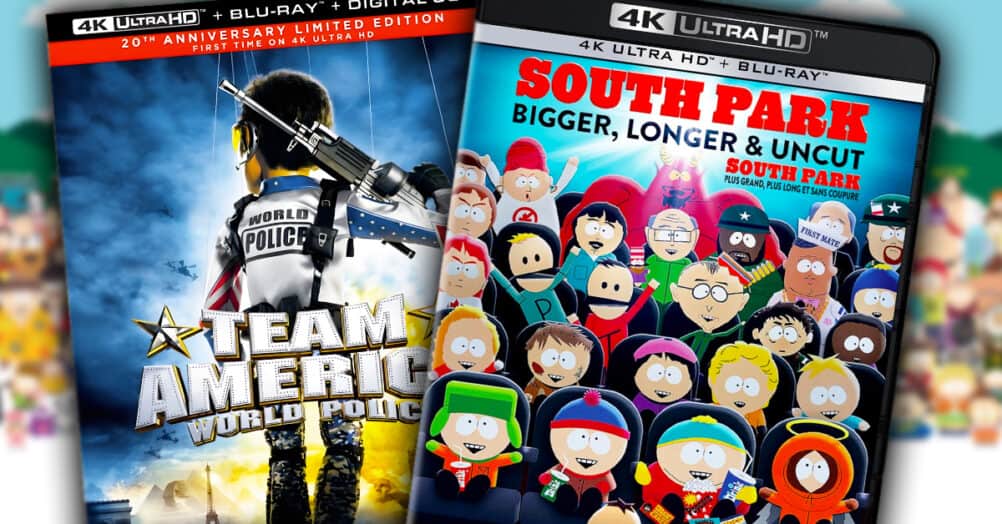
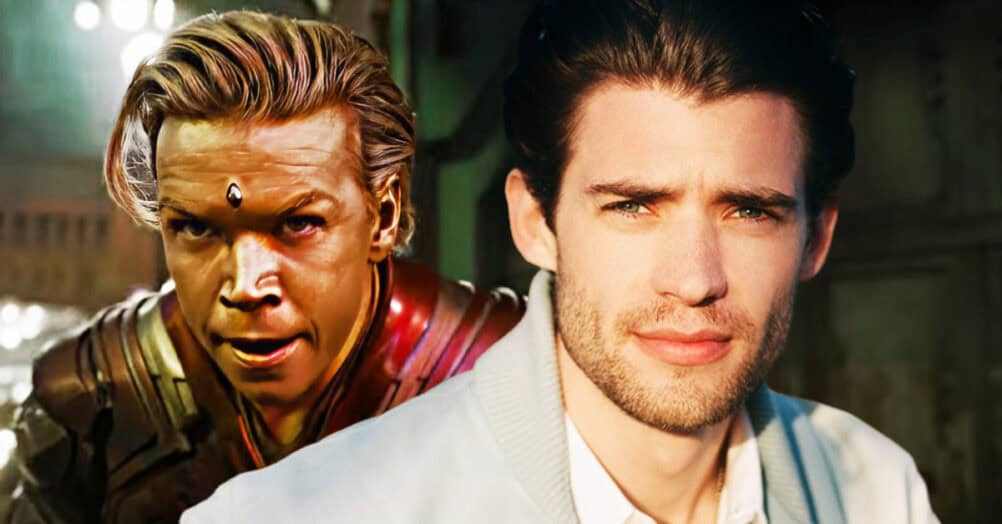
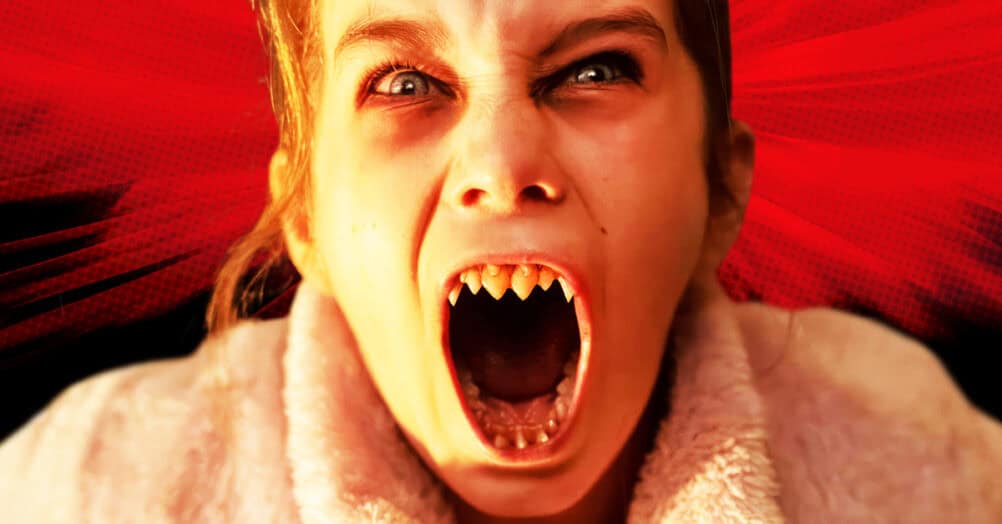
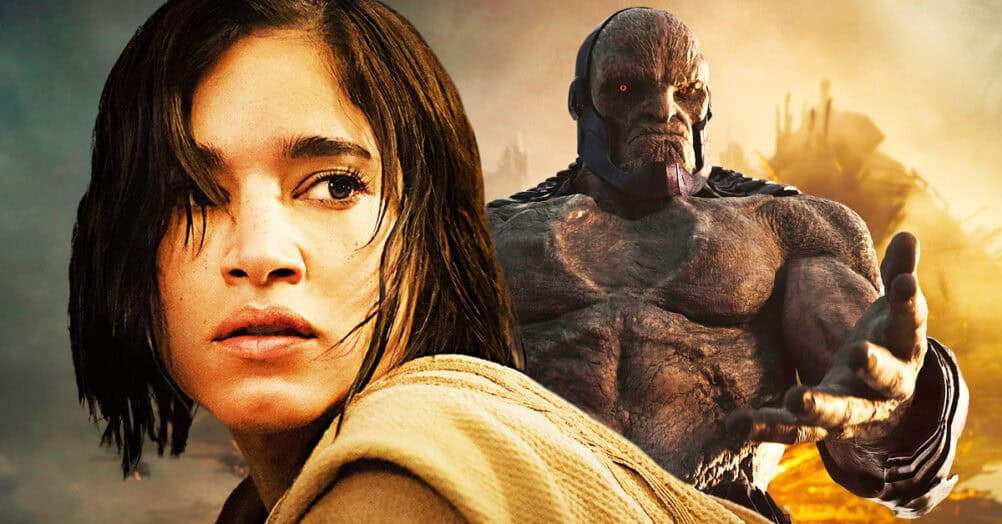
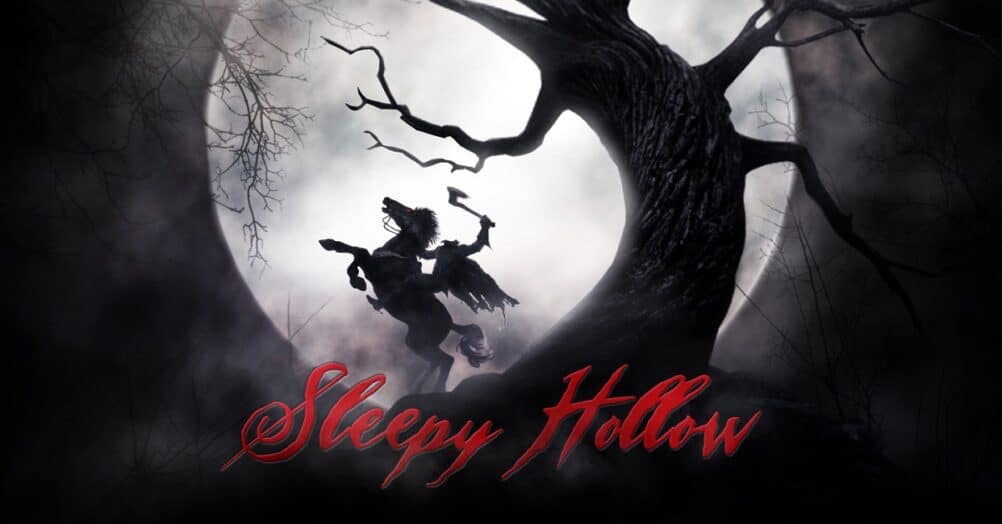
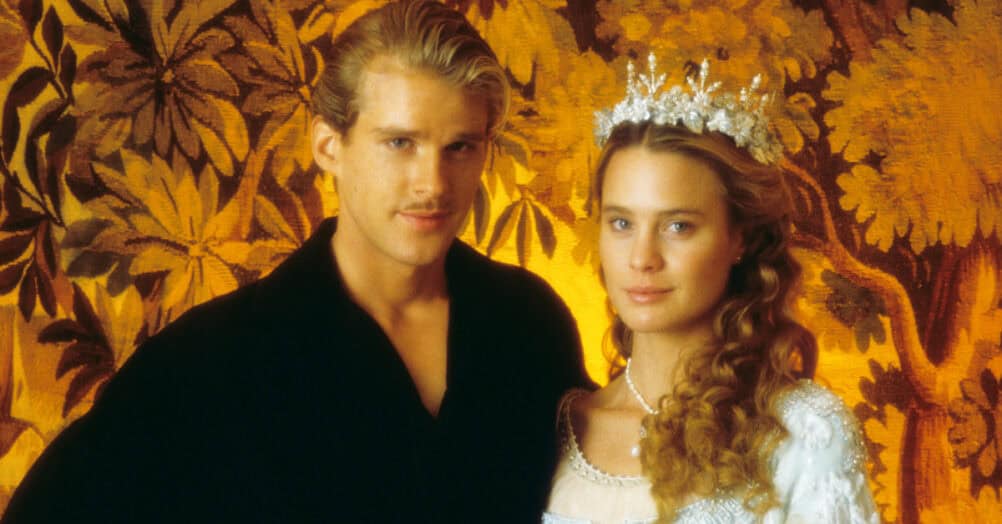
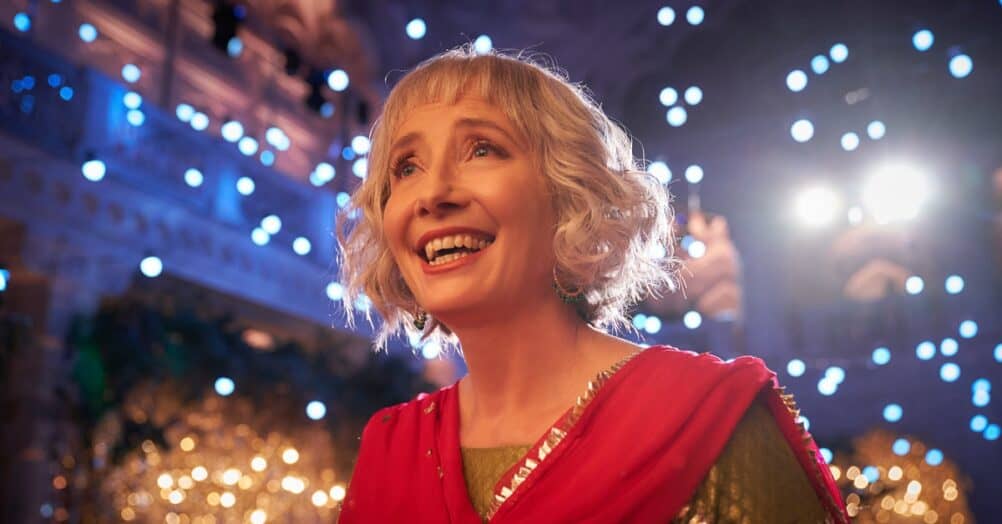

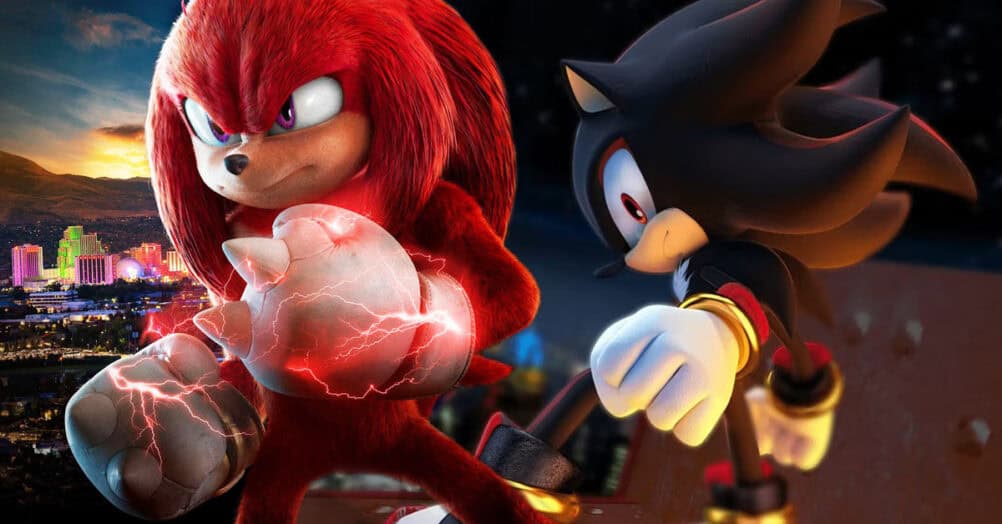
Follow the JOBLO MOVIE NETWORK
Follow us on YOUTUBE
Follow ARROW IN THE HEAD
Follow AITH on YOUTUBE